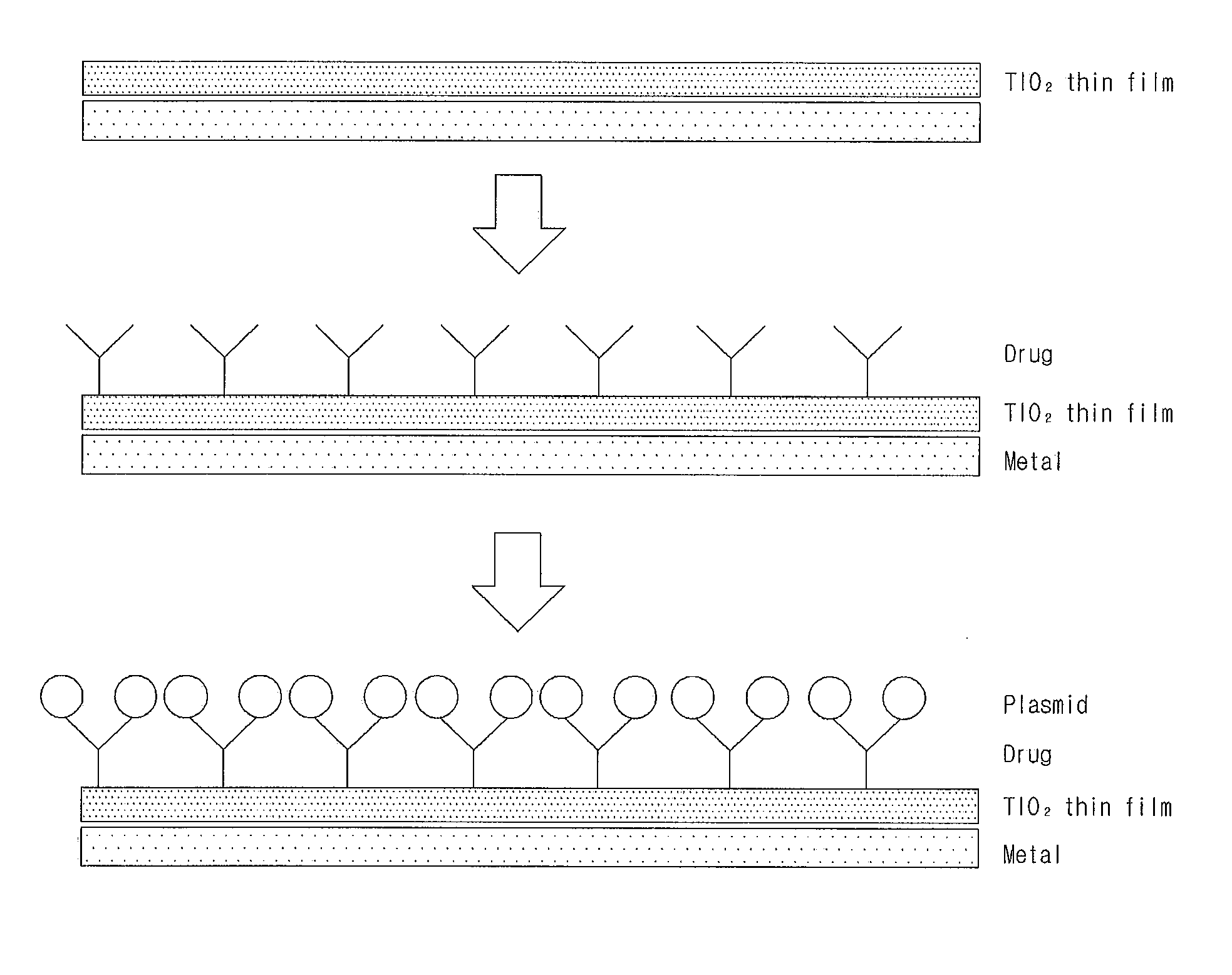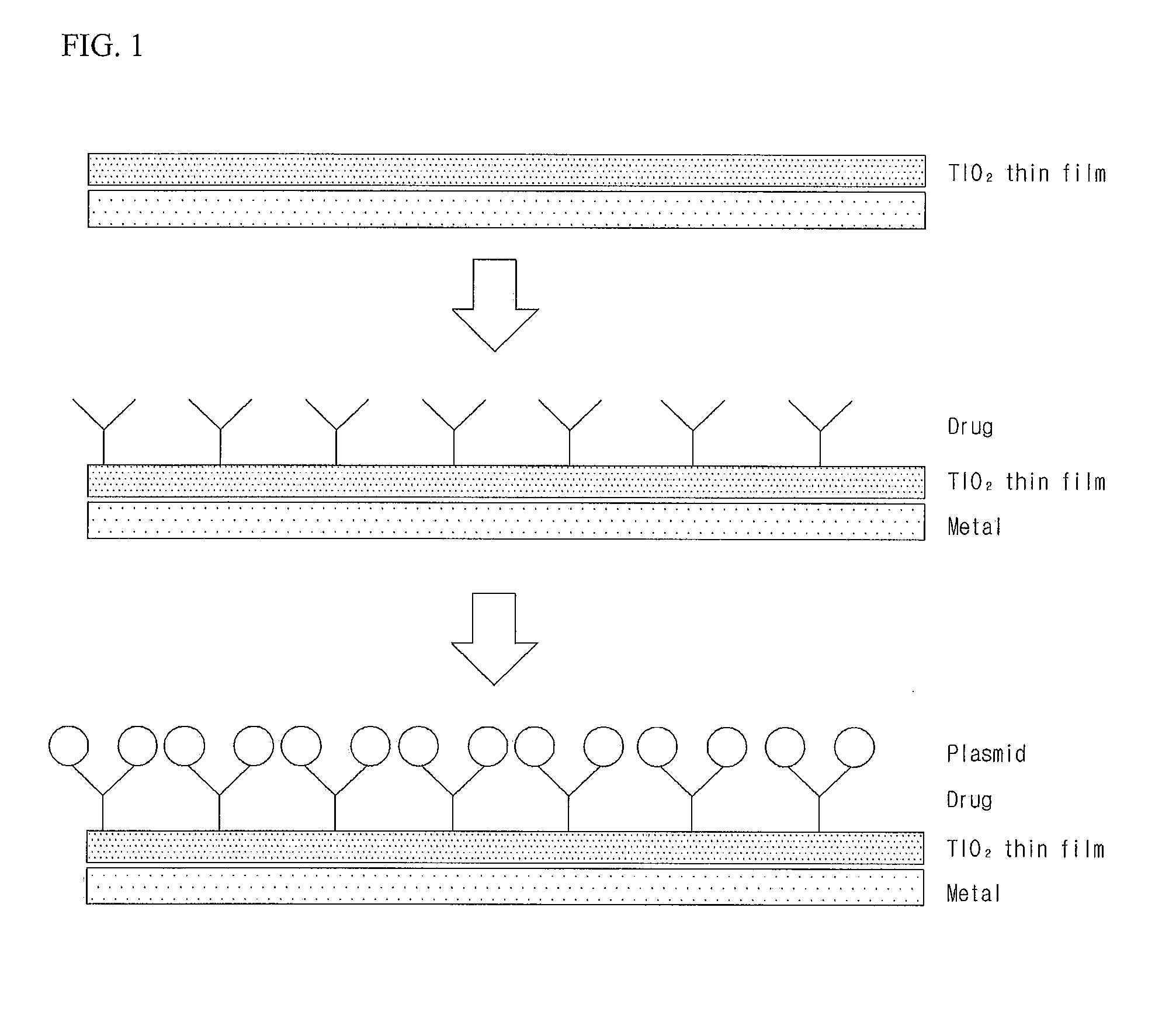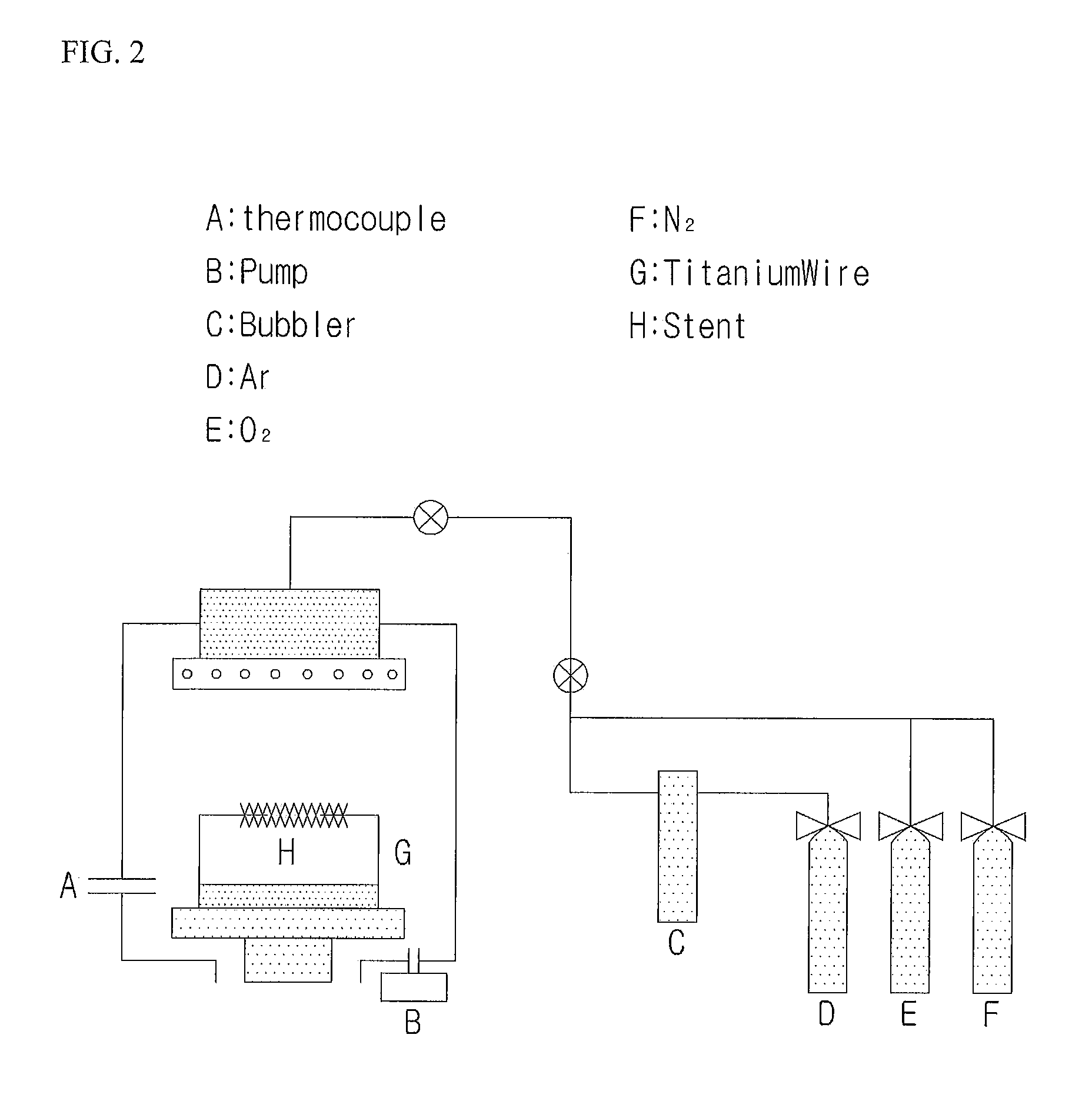Gene Delivery Stent Using Titanium Oxide Thin Film Coating, and Method for Fabricating Same
a technology of titanium oxide and stent, which is applied in the field of stent delivery stent using titanium oxide thin film coating, can solve the problems of inability to allow the drug eluting stent to affect only a specific cell due to chemical material characteristics, and the restenosis occurring after the bare metal stent was the biggest problem, so as to reduce the risk of restenosis and metal allergy, inhibit the proliferation of vascular smooth muscle cells, and reduce the risk of resteno
- Summary
- Abstract
- Description
- Claims
- Application Information
AI Technical Summary
Benefits of technology
Problems solved by technology
Method used
Image
Examples
Embodiment Construction
] Quantification of Adhered Gene
[0103]The metal plate fabricated by the methods in Examples (1) to (3) was positioned on a12-well plate, and a solution containing genes (total plasmid content: 20 ug / 200 ul DW) was put onto the metal plate. After the metal plate was left for 8 to 12 hours, the metal plate was immersed again in sterile deionized water (DW) for 30 minutes to remove extra DNA non-specifically adhered thereto. A concentration of the plasmid in washing DW was measured using Nanodrop ND-1000 spectrophotometer (Thermo scientific, USA). After the plate was washed and dried in a sterile bench, subsequent experiments were performed. The amount of DNA adhered to the flask was estimated by arithmetically subtracting a measured amount of the DNA in the washing DW from initial 20 ug of plasmid according to the following Equation 1.
Equation 1
[0104]DNA binding amounts (ug)=20 ug−DNA amount (ug) in washing DW
[0105]FIG. 8 is a graph showing the amount of the gene coated on each of thr...
PUM
| Property | Measurement | Unit |
|---|---|---|
| Time | aaaaa | aaaaa |
| Time | aaaaa | aaaaa |
Abstract
Description
Claims
Application Information
 Login to View More
Login to View More - R&D
- Intellectual Property
- Life Sciences
- Materials
- Tech Scout
- Unparalleled Data Quality
- Higher Quality Content
- 60% Fewer Hallucinations
Browse by: Latest US Patents, China's latest patents, Technical Efficacy Thesaurus, Application Domain, Technology Topic, Popular Technical Reports.
© 2025 PatSnap. All rights reserved.Legal|Privacy policy|Modern Slavery Act Transparency Statement|Sitemap|About US| Contact US: help@patsnap.com



